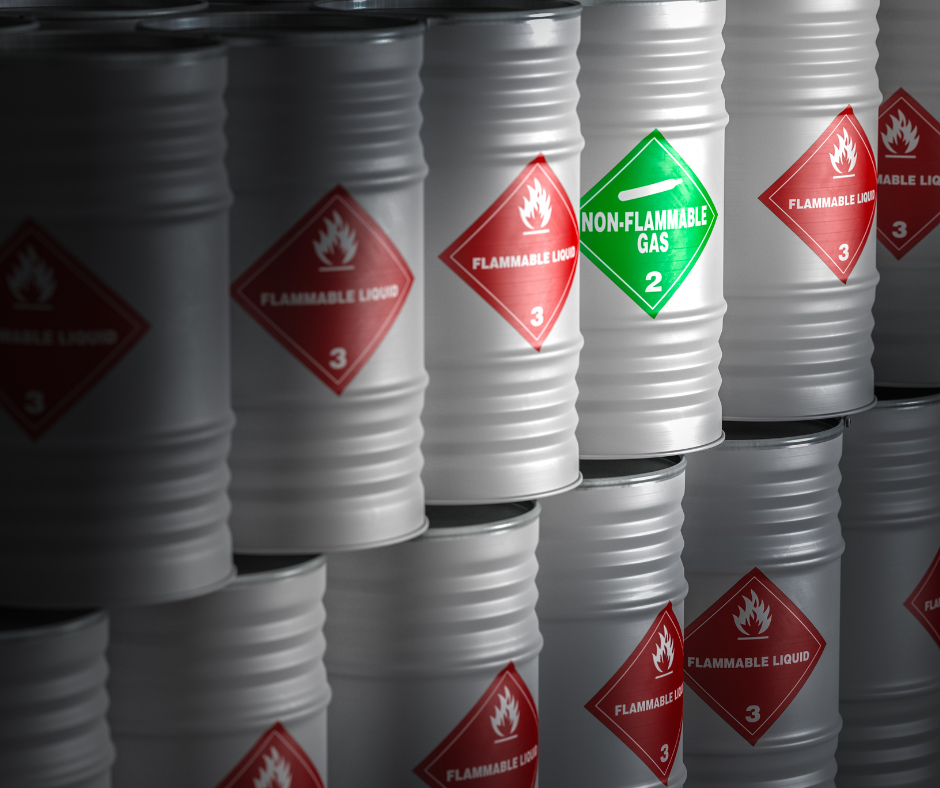Flammable And Combustible Liquids Fall Into Which Fire Classification?
Fire safety is a critical aspect of industrial and everyday life, and it involves classifying materials based on their flammability and...
.png)
Dealing with flammable liquids requires more than just caution. It demands a proactive approach to safety.
Class B fires can be particularly catastrophic since their fuel sources are flammable liquids and gasses. Understanding their risks and implementing preventive measures is critical for maintaining a safe working environment.
Let’s take a closer look at Class B fires, how your industrial facility can prevent them, and what it takes to achieve both safety and sustainability in your operations.
To understand how to prevent Class B fires, it’s important to know the differences among the types of fires that could occur in your industrial facility.
There are five classes that are categorized based on the type of fuel that is burning. This helps determine the most effective way to extinguish the fire. The five fire classes are:
.png?width=300&height=251&name=Hazardous%20Waste%20Disposal-Lato%20(9).png)
Any time you deal with flammable liquids, you run the risk of a Class B fire. These fires are caused by the ignition of substances like gasoline, oil, paint, propane, and other solvents. Class B fires can occur in various scenarios, including:
Spills and Leaks: Flammable liquids that spill or leak from containers can create a highly combustible environment. A small spark or open flame can easily ignite these substances, leading to a rapid and intense fire.
Improper Storage: Storing flammable liquids in inappropriate or unapproved containers or in areas with inadequate ventilation increases the risk of a Class B fire. Vapors from these liquids can accumulate and ignite if exposed to an ignition source.
Static Electricity: Handling flammable liquids can generate static electricity. If proper grounding and bonding procedures are not followed, the static discharge can ignite the vapors from these liquids.
Equipment Malfunctions: Faulty or poorly maintained equipment, such as leaking fuel lines or malfunctioning heaters, can lead to the release and ignition of flammable liquids.
Open Flames and Sparks: The presence of open flames, sparks from electrical equipment or other ignition sources in areas where flammable liquids are used or stored can quickly cause a Class B fire.
Understanding the common causes of Class B fires is crucial for preventing them. However, there are additional steps you can take to ensure any flammable liquids you have on site do not pose a risk for Class B fires.
Careful attention to storage, handling and disposal practices is key to preventing Class B fires.. Here are some key steps you can take to reduce the risk of these fires at your facility:
Proper Storage:
Handling Precautions:
Spill Management:
Maintenance and Inspection:
Training and Awareness:
By following these preventive measures and ensuring safe disposal, you can significantly reduce the risk of Class B fires and maintain a safer environment. However, it’s important to remember that creating a culture of safety doesn’t start and stop at your facility’s doors.
If you generate hazardous waste, including flammable substances like spent solvents, it’s your responsibility to ensure this waste is properly disposed of according to local, state and federal regulations.
If your goal is to not only focus on safe disposal, but to focus on sustainability as well, the disposal of your flammable spent solvents should end with nothing being wasted. You can achieve both safety and sustainability by sending your flammable spent solvents to a solvent distillation facility.
Solvent distillation is a process that separates a liquid mixture into its component fractions of desired purity by heating the mixture to vaporize the solvents and then condensing the vapor back into a liquid form, allowing for the recovery and reuse of the solvent.
At Samex, any still bottoms that are generated during the solvent distillation process are transferred to our fuel blending area, where alternative fuel sources are created. Samex also has a water treatment plant where commercially clean nonhazardous water is repurposed for brick manufacturing. Solid byproducts from the treatment process are sent to the fuel blending area as well where they become part of the repurposed waste destined to the cement kiln to be used as an alternative fuel.
By prioritizing the safe handling, storage and disposal of flammable liquids, you can significantly reduce the risk of Class B fires. At the same time, embracing solvent distillation for your flammable waste can elevate your commitment to both safety and sustainability, turning waste into a valuable resource.

Fire safety is a critical aspect of industrial and everyday life, and it involves classifying materials based on their flammability and...
.png)
Class 1 flammable liquids are extensively used in various industrial applications, yet their usage carries inherent dangers that require special...
.png)
Flammable liquids are a common presence in both industrial and household settings, but their risks can be underestimated. If you do this, you’re...